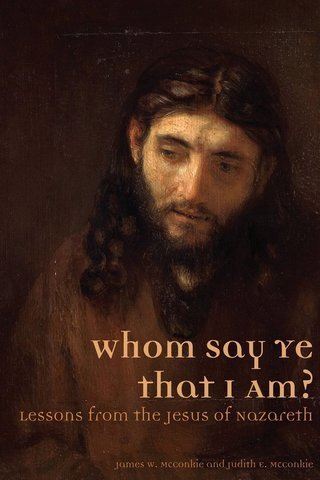Only hours before Jesus made one of the great “I Am” declarations in John’s Gospel, He had fed five thousand hungry pilgrims and walked on the “rough seas” of the Galilee (John 6: 1-25). He had performed astonishing miracles. Yet when He came to the synagogue in Capernaum, the ostensible disciples who had followed Him demanded more, saying, “What sign then will you give that we may see it and believe [you are the promised Messiah]? What will you do? Our ancestors ate the manna in the wilderness; as it is written: He gave them bread from heaven to eat.’ [Why will you not do the same?] (John 6:31 NIV).”
Jesus then prophesied about His impending death. When they heard that, the text says they “grumbled” at His teachings. And from that time on, we read the heartbreaking note that “many of His disciples turned back and no longer followed Him” (John 6:35-66 NIV).
It is difficult to imagine from our perspective why eyewitnesses to such miracles would find it so seemingly easy to turn away from Him. And when we read the next verses of the chapter, we do not wonder that Jesus asked the Twelve, perhaps even in an ironic tone, “You do not want to leave too, do you?” Peter’s earnest response was, “Lord, to whom shall we go? You have the words of eternal life. We have come to believe and to know that you are the Holy One of God” (John 6:67-69 NIV).
The Importance of Religion in Daily Life
Taken in its entirety, that whole sequence of events in the sixth chapter of John’s gospel culminating in Peter’s testimony is one we have thought about in the last several years as we have researched and written about Jesus the Messiah.
We have asked so many times about what keeps the two of us, “who have not seen and yet have believed” (John 20:29), connected to the faith when even disciples who had watched as Jesus enacted miracle after miracle found it necessary to leave. We wondered why the eyewitnesses had gone their separate ways, often with anger and almost always with broken hearts or perhaps a feeling that the human frailties of the faithful were just cause to separate them from the kingdom of God.
It is a question with enormous implications in today’s religious environment.
Statistical studies have asked the very question, most recently in a fascinating one by the Pew Research Center. In a study conducted over several years of 35,000 Americans from all 50 states between the ages of 18 to 65+, the interactive report suggests a distinct decline in affiliation with virtually all organized religions as well as a clear downward trend in belief in God.1
While the data lacks minute disclosures on the very personal reasons why people leave religious practice, the descending movement leaves the two of us with a sense of concerned foreboding. We have made connections with the early disciples of Jesus’ day who asked, “Was this Jesus of Nazareth the genuine, promised Messiah to whom we can consecrate our lives to following?” And today we seem to ask, “Shall we believe in a Messianic God at all? And if so, Is this His Church?”
4 Reasons Why We Say Yes to the Questions About Belonging and Believing
1. In part because of our dedicated study of the four Gospels, we believe that Jesus of Nazareth was and is the promised Messiah, the anointed Savior of the world.
2. We remain convinced that despite his shortcomings as a mortal, Joseph Smith convened with God the Father and that very Jesus of Nazareth.
3. The Church that derived from Joseph’s experiences with heavenly beings was and is once again an inauguration of a literal Kingdom of God.
4. Inasmuch as more than 65 years ago we both consecrated our lives to live as His disciples within that Church, we believe in and have considered the “cost of discipleship” Luke wrote about (Luke 6:26-30).
He recounted that Jesus asked His disciples to love God and love one another—to “feed [His] sheep”—meaning to serve each other because all mankind are our brothers and sisters, meaning to bear our and their burdens with kindness and faith, and finally, meaning to count the cost and consider it an incredibly low toll for such inestimable grace.
The Biggest Hurdle
We understand that by far the biggest hurdle for any investigator and/or committed member is to retain those convictions during what a biographer of Mother Teresa called “spiritually fallow periods” when she, of all people, “felt no presence of God whatsoever,” when we may strain at intolerant members or sociological issues and customs that are vexing and even hurtful. But her biographer writes that, for Mother Teresa, those years of patient, “faith-filled perseverance . . . were her most heroic act.”2 Would that we who wish to be His disciples in The Church of Jesus Christ of Latter-day Saints could be less like those who left Jesus despite the miracles and the manna and be more like her.
Lead image from ChurchofJesusChrist.org
James and Judith McConkie are the authors of Whom Say Ye That I Am: Lessons from the Jesus of Nazareth, published by Kofford Books. It is available in print, Kindle, and Audible formats at Deseret Book stores and online and through barnesandnoble.com and amazon.com. This is the 13th in a series of essays about the book. Watch for more on ldsliving.com.
[1] Seehttps://www.pewforum.org/religious-landscape-study/region/west/importance-of-religion-in-ones-life/#beliefs-and-practices
[2] Seehttps://time.com/4126238/mother-teresas-crisis-of-faith/



